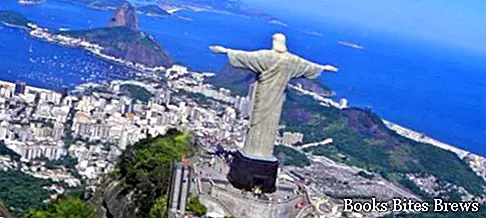What to see in Rio de Janeiro, itinerary to discover the city, history and development of the historic center, panoramas, beaches and city symbols, from the Sugar Loaf to the Christ the Redeemer.
Tourist information
Famous city in Brazil, Rio de Janeiro overlooks the Atlantic Ocean in the Guanabara bay.
When in January 1501 the area was reached by Portuguese explorers, during an expedition led by Amerigo Vespucci, the bay of Guanabara was mistaken for the mouth of a river and was called Rio de Janeiro, which in Portuguese means January river.
In 1532 the Portuguese formally took possession of the area and built a small outpost, but it was the French who founded the first European settlement on a bay islet.
Subsequently, the Portuguese expelled the French and founded the first nucleus of São Sebastião do Rio de Janeiro, in honor of San Sebastiano, whose name was also given by the sovereign of Portugal, Sebastiano I.
The cultivation of sugar cane contributed to the development of the city and, in the eighteenth century with the discovery of gold in the nearby Minas Gerais, the port acquired considerable importance, despite the invasion attempts and the looting by pirates, especially the French. In 1763 Rio de Janeiro became the colonial capital.
In 1808 following the Napoleonic invasion, the Portuguese royal family moved here, along with many nobles, and the city became the capital of the Kingdom, continuing to be so, even when in 1889 Brazil became a Republic, until 1960, the year in which the title passed to the new city of Brasilia, the current capital of the nation.
What see
Statue of Christ the Redeemer: one of the symbols of Rio de Janeiro, it is located on the top of Corcovado, a 710 meters high mountain, included in the Parque National da Tijuca, a large forest within the urban area. The statue about 38 meters high represents Jesus Christ embracing the whole city and welcoming visitors arriving in the bay with open arms.
Sugar loaf It is a rocky promontory with a characteristic profile that rises from the sea, it represents a magnificent panoramic point, thanks to its 396 meters above sea level. To reach the top there is a cable car that makes, as an intermediate stop, a stop on another hill located in the same peninsula, the Morro da Urca, 220 meters high, the panorama from up there is extraordinary, it includes the metropolis as a whole, the bays and the hills, it is considered another symbol of Rio de Janeiro.
Santa Teresa district: located on the heights of the city, it exudes an ancient colonial flavor, with the rich houses of the colonists of the 1800s, the narrow streets and the suggestive views. It can be reached via a historic and picturesque open tram, the Bonde, which starts from the center, crosses the Arcos da Lapa, a former Roman-style aqueduct converted into a tram viaduct, and continues to climb the hill.
City center: skyscrapers and modern buildings prevail, including the striking Sao Sebastiao Cathedral, with a truncated cone shape. Of the old city remain, the Church of Nossa Senhora da Lapa dos Mercadores, the Church of Nossa Senhora da Candelária, the Monastery of Sao Bento, the Arco do Teles, the Casa de Trem, where the Museu Histórico Nacional is located.
Recommended readings- Brasilia: what to see in the capital of Brazil
- Natal (Brazil): what to see
- Sao Paulo (Brazil): what to see
- Maceio (Brazil): what to see between magnificent beaches
- Jericoacoara: what to see in the state of Ceara
Beaches: the best are those of Copacabana, Ipanema, Leblon, Leme, Botafogo, Arpoador and Flamengo.
Rio Carnival: every year in Rio de Janeiro one of the most famous carnivals in the world is celebrated.
Dance schools: the best organize spectacular Samba parades, in great antagonism between them to obtain a prestigious recognition.




